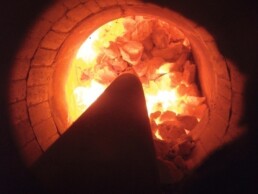
Clinker Cooler Optimization
Process Optimization of the clinker making is usually done to reduce the heat consumption, to improve the clinker quality and to increase the lifetime of the equipment & spares by stabilizing process parameters.
As an important process during the cement production, grate cooler plays significance roles on clinker cooling and waste heat recovery.
Process Optimization in Clinker Cooler
Our focus in the Clinker Cooler
- Recuperation of heat from hot clinker
- Cooling of clinker
How to Improve Recuperation Efficiency
- Maximized cooler heat recovery efficiency of the existing cooler can be done by replacing the old grate plates with the latest generation SECAN developed AFC NOZZLE which helps in “Clinker Cooler Optimization” aims to improve cooler heat recovery efficiency of the existing clinker cooler with optimizing cooling air volume/pressure, thickness of clinker bed and grate speed.
- Clinker output, clinker quality and heat consumption are drastically improved without doing any major modification in the cooler.
- By installing our new generation AFC NOZZLE we guarantee a minimum saving of 15 – 40 k cal.


Process Optimization in Kiln
The optimization work in a clinker kiln involves many that must be executed in such a way that each task has perfectly defined their approach and objective, parts of the installation such as burners, fans, etc
Stability of raw materials: The stable and adequate quality of the kiln feed is of vital importance for this process.
Process settings: Installed parts such as burners, fans, etc play an vital role for optimized results.
Use of alternative fuels: The use of alternative fuels has an important economic and environmental advantages, which should mixed and prepared by a good recipe.
Kiln operation: The kiln operation is an important part of this optimization, as it was mentioned above, there are several tasks associated with the energy optimization of the kiln.The main objective of the kiln operation is to maintain the process controlled, in addition to a stable quality of clinker, and to reduce energy consumption since heating or cooling requires maneuvers to recover the desired state with production reductions and increases in energy consumption.
